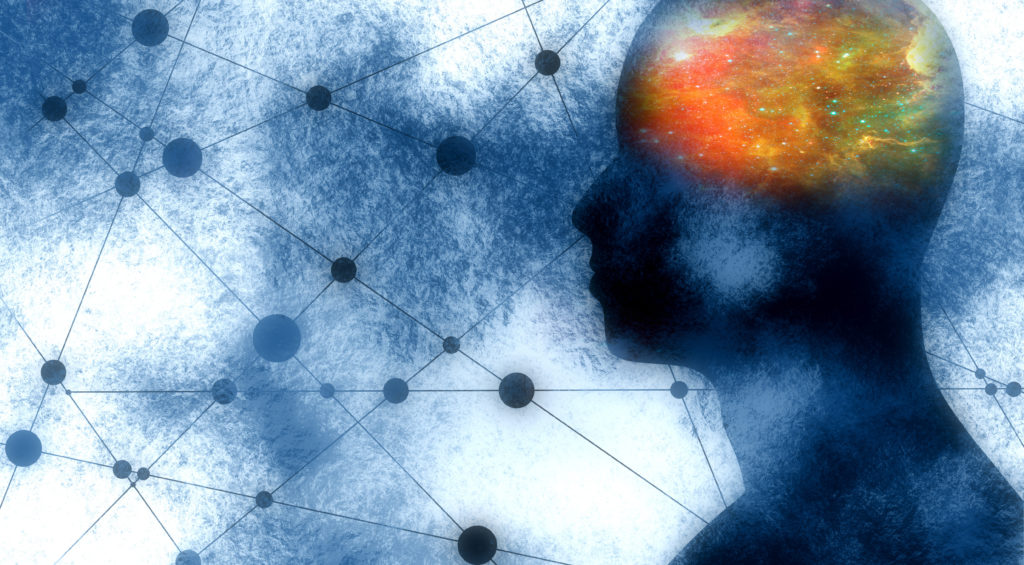Before there were apps, luxe spas, and retail therapy, what DID humans do to ease the woes of their stressors?
And with 2 in every 3 adults in the United States claiming to be “stressed out”, is there any hope that we can somehow retrain ourselves to be less stressed so that we can feel better and improve our health?
The stress management industry collects a cool $7 billion a year, but surely our ancestors had practices they used to manage their stressors that didn’t involve getting a $500 facial, right?
With stressors like looming death, starvation, or injury in battle there’s little question that their stressors were a bit more intense than ours. And yet, we are more stressed than ever.
Let’s be real about it, stress is hugely impactful on our lives – not just in how we feel, but also in its impact on our health and wellbeing. But before we go any further, we need to better understand how stress works.
Stress and Our Nervous System
Stress is any sort of mental strain in our relationships, health, work, or just driving on the freeway. But it is also important to recognize that there is both good stress (called eustress and includes things like buying a house, planning a wedding, booking that deal, making a deadline, etc.) and distress (such as a nasty boss, health challenges, financial burdens). But while one type of stress may be good and the other bad, it may not be all that helpful to distinguish between them.
While it’s not a bad idea to train ourselves to differentiate between these two types of stress, the more important focus should be on modifying your reactions and behavior. Ultimately, you are the deciding factor on whether something is eustress or distress.
Yes, you understood that correctly, you can transform your worst, negative stressors into positive ones (mostly) by simply engaging with that stressor in a particular way.
And how you decide (consciously or not) to react to that stressor, determines your nervous system’s response.
In fact, a study performed at the University of Wisconsin observed and tracked the health of a group of people over decades. People who were highly stressed and believed that that stress was toxic for them, had a 43% increased rate of early mortality. This result is compared to those who were highly stressed, but thought that stress was good for them. This finding shows that our perception of stress plays a huge role in the impact stress has on our bodies!

But being able to make that decision effectively starts with having a healthy, regulated nervous system.
Our nervous system has two basic ways of functioning: parasympathetically and sympathetically. When our parasympathetic nervous system is activated, we are at our most calm. This is the state where natural healing can occur, digestion can optimize, and we are at ease.
For most of us, however, we engage with stressors by way of our sympathetic nervous system. This far more alarming, reactive, and physiologically dis-eased state is the more common way most of us respond. We react to missing a train as though we were being chased by a hungry pack of wolves.
Each time we experience a stressor, we have to make the decision, how significant is this situation?
But as I mentioned earlier, the challenge is that we struggle to make this differentiation between what’s WORTH actually panicking over. This is partially born from our heightened levels of artificial stimulation (e.g., screen time, alerts, etc.) that rev up our nervous system. With all these external and internal stimuli driving us into a constant sympathetic state, it’s no wonder that Calm app isn’t working.
So, to change the way we respond to stress, we must first reset our nervous system. And the first step to doing that is to reduce stimulation.
Handling Stress Like a Samurai
But let’s say you are able to retrain yourself and function in a mostly parasympathetic state. Will that be enough?
Being able to choose how we respond to stress also requires the ability to differentiate between good and bad stressors, and identifying those things actually worth being stressed about.
Unfortunately, that’s not something most of us are trained to do. But there is some place — or more specifically, some time — we can go for a lesson on this important skill.
If we time travel back to late 12th century Japan, we would meet one of the boldest and well-adapted stress-managers of all time: the warrior class of Japan, the Samurai.
While it’s not exactly fair to compare, one could say that a career where success is death is somewhat more stressful than that guy cutting you off on the 101, yeah?
Despite the weight of their devotion and commitment, Samurai were obsequious and unflappable. Their secret was a practice centric to increasing inner calm so they could act intentionally and make decisions quickly without getting emotional or overstimulated.
Much of their duty, was to win a victory over themselves and the stuff between their ears. This practice involved learning to ignore all that was out of their control, leaving them to focus on the situations they could impact.

How many times do we stress out about something out of our control? Having the ability to discern physical stress, or psychological stress is imperative to this process and helps us navigate what we can, and cannot, manage ourselves.
Before we go any further, let me acknowledge that if you struggle with anxiety or are navigating chronic stressors simply hearing “only worry about that which you can control” can be infuriating — especially if you feel entirely out of control of most things in your life and your nervous system is upregulated. I’m not suggesting a heavy dose of Pollyanna here, but once you’ve established a healthy baseline and are in that parasympathetic state, you can apply the principles of the Samurai.
The most powerful tool these warriors used, aside from their quick reflexes, was the Bushidō code. This code consists 8 virtues that stem from Buddhism, Shintoism, Taoism, and Confuscionism. These virtues included things like benevolent compassion, heroic courage, respect, honor, honesty, and — most importantly — self control.
You can translate these virtues in a variety of ways, but I feel it most clearly translates to a practice of equanimity — being able to find calm amidst chaos through balance, resilience, and equilibrium. Cultivating equanimity is not about beating yourself up for feeling, and I’m not suggesting you don’t ever feel. But it’s about creating those spaces for yourself so that you can, with a discerning mind, recognize when you are making impulsive, reactive decisions and when you are deciding from a place of purpose.
The 5 Practices to Start Leveraging Your Inner Samurai
You won’t always be able to maintain this coolness — especially if you haven’t down-regulated your nervous system (so start there!). Afterall, even the Samurai failed sometimes! But there are a few things that you can do to cultivate your own inner Samurai.
- Develop a Stilness Practice It doesn’t need to be legs-crossed-in-padmasana meditation, but cultivating a relationship with your mind and its reactivity and inclination to engage emotionally in real time will help tremendously in this practice. Some of my favorite mindfulness practices include balneotherapy, kinhin, forest bathing, tea meditation, NSDR, or just a run of the mill sit practice!
- Imagine Your Self, But Over There. Remember the scene from The Christmas story where Scrooge got to watch himself from afar? Remember how much he learned as an observer? The practice of looking at your life, your choices, and your relationships as an outsider packs a big punch in the world of gaining perspective.
- Cultivate a Breath Practice. Breath is powerful because it momentarily suspends time (almost anyway!). It allows for our brain to be entirely invested, for a few seconds, in one thing – the breath, and it’s accompanying sensations. In moments when we are triggered emotionally, we’re often inclined to engage and react emotionally. Cultivating a breath practice enables us to replace our emotionally-driven decisions with a moment of pause. This allows for more clinical, sensible, and level-headed decisions.
- Be Like Water. Things WILL happen. You WILL be triggered, and occasionally you’ll even react emotionally. Don’t take it personally. Instead, allow those moments to be learning experiences and opportunities to reshape and regroup. Water learns quickly from its environment. It adapts and quickly modifies its shape to accommodate it’s environment. Do the same.
- Be Compassionate. When you are triggered emotionally, or tempted to engage reactively, the moment of pause will also help you listen. Listening means that you are allowing room for empathy – essential for understanding and, therefore, compassion, which is essential in equanimity. Often our inclination is to be offended or take other’s words personally, but — and this is HARD — this is an excellent time to try to practice empathy.
Whether you are an experienced Samurai or a busy office worker, I hope that you will allow yourself the opportunity to retrain your stress response, change your life, and improve your health!
